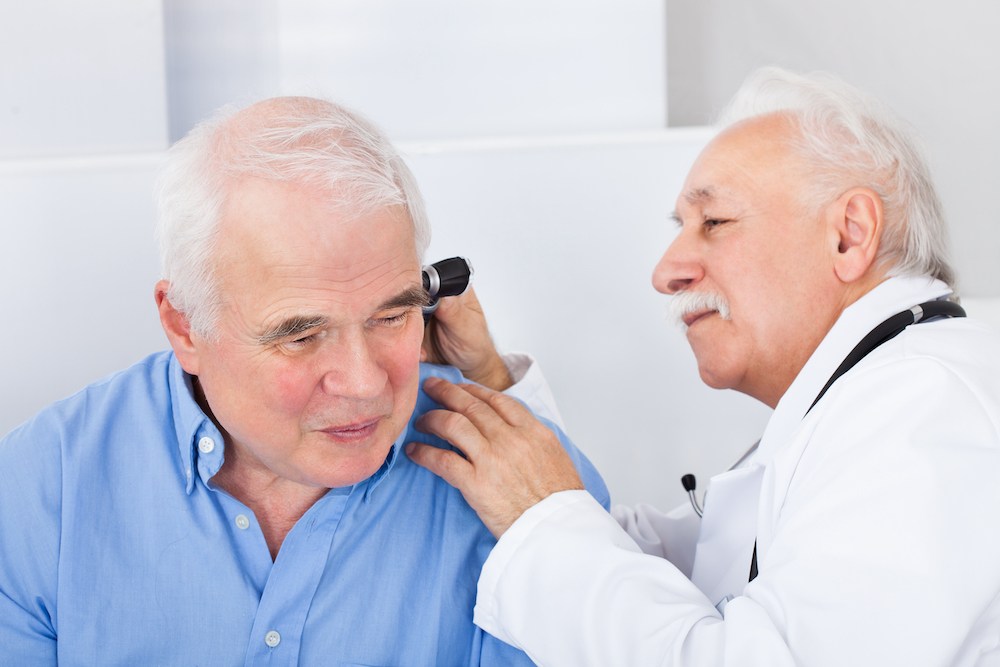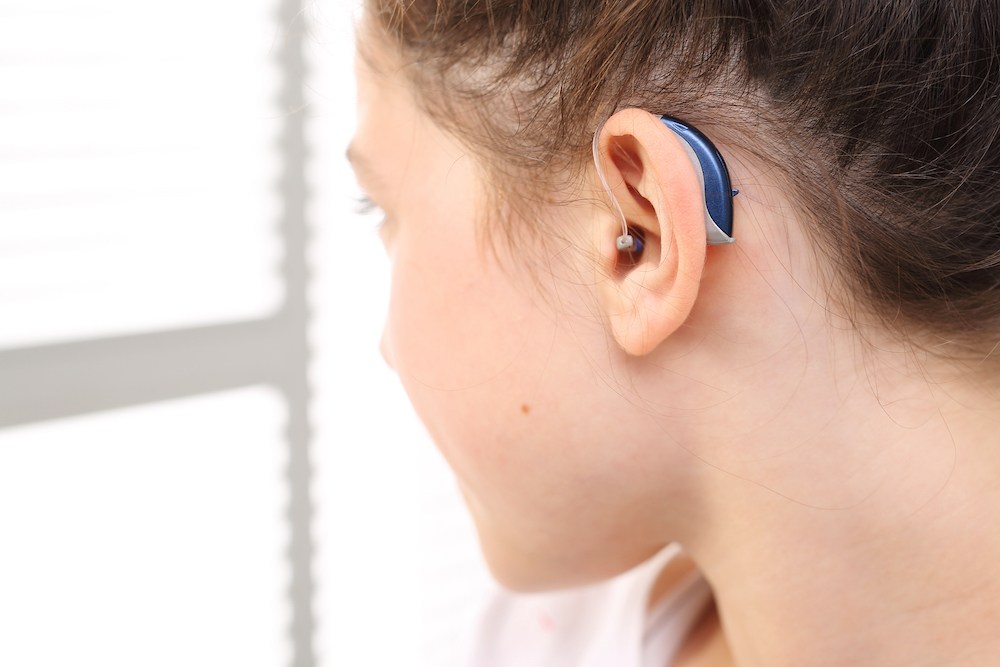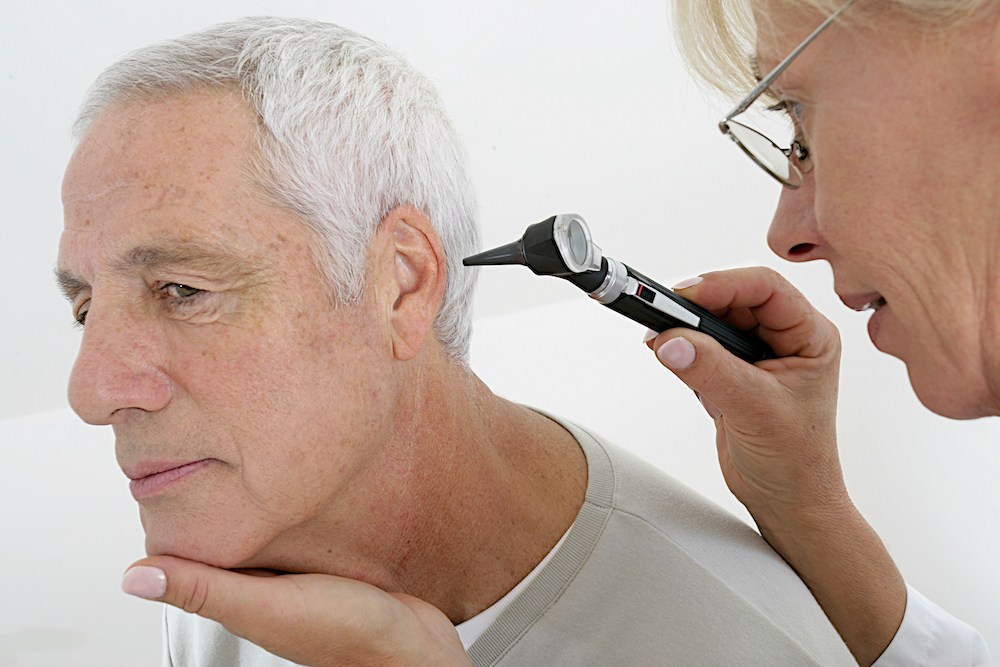Hearing Aids for Musicians: Specialized Features
Musicians rely on precise hearing to identify pitch, separate instruments
Fill your holidays with the sound of laughter and don’t miss any of these magical moments. Schedule Today! →

By: admin | April 24, 2025
As new parents, you’re juggling countless responsibilities and learning about your baby’s needs across all aspects of their development. From feeding schedules to sleep patterns, there’s so much to monitor that hearing health might not be at the top of your list. Yet your child’s ability to hear plays a crucial role in their language development, social connections and how they learn about the world around them.
Your baby’s hearing begins developing even before birth and continues to progress rapidly throughout their early years. You might notice your little one responding to your voice, startling at loud sounds or turning toward interesting noises – these are all signs of healthy hearing development. While most babies are born with normal hearing, being aware of potential issues early on can make a significant difference. Understanding the basics of infant hearing health doesn’t need to be another source of worry – instead, think of it as one more way you’re looking out for your child’s well-being during this amazing time of growth and discovery.
Your baby’s ability to hear and interpret sounds forms the foundation for their speech and language development. Appreciating this importance is the first step towards promoting your child’s healthy auditory growth. It encourages proactive measures – from regular appointments with hearing health professionals to maintaining a quiet environment at home.
Knowing the role of hearing in your baby’s overall development gives you an extra layer of understanding. This isn’t about turning you into an instant expert but rather about equipping you to make informed decisions that could influence your child’s interaction with their surroundings. So, every bit of information is important – especially when it relates to something as vital as your child’s hearing health.
This relationship is fundamental, with hearing playing a key role in various developmental milestones. From language learning to social interaction skills, healthy hearing paves the way for your child’s growth in multiple areas. For instance, children learn to speak by imitating the sounds they hear around them. When hearing is limited, so is the opportunity to absorb and reproduce language, which can lead to delayed speech development or difficulties with pronunciation and vocabulary.
Beyond language, hearing affects how children engage with the world socially and emotionally. Understanding directions in the classroom, responding to their name on the playground or participating in games and group activities all rely on the ability to hear clearly. If a child struggles to follow conversations or respond appropriately, they might withdraw or feel left out, which can impact their confidence and willingness to engage with others. Early identification and support can help avoid these outcomes and set a more comfortable, confident path forward.
Knowing what typical hearing development looks like for a baby can help you spot any potential hearing concerns early on. So, what are the standard auditory milestones for babies?
In the first few months after birth, your baby should startle or jump at sudden loud noises. By three months, they should recognize your voice and calm down or smile when they hear it. As they approach their half-year mark, babies typically turn their heads towards sounds and begin babbling as a way of mimicking the sounds around them. By nine months, you might notice your baby responding to their name and recognizing familiar words like “no” or “bye-bye.” Around their first birthday, many children begin to form simple words like “mama” or “dada,” using their hearing and speech together to communicate basic needs or get attention.
These milestones are not set in stone as every child develops at their own pace. Some variation is completely normal, especially depending on other developmental factors. However, if you notice that your baby is consistently missing several of these markers or seems unresponsive to sounds like voices, music or everyday noise, it’s worth checking in with a hearing health professional. Acting early can help make sure your baby gets the support they need, whether through monitoring, treatment or additional evaluations as they grow.
Hearing loss in babies can be caused by a range of factors, and understanding these causes can help you make informed decisions if concerns arise. Some babies are born with hearing loss due to genetic conditions, even if there’s no family history. Others may experience hearing issues because of complications during pregnancy or birth, such as infections like cytomegalovirus (CMV), premature birth or lack of oxygen at birth. These early-life events can sometimes affect the development of the auditory system.
Hearing loss can also occur after birth. Infections like meningitis or measles, certain medications that affect hearing and head injuries are all potential causes. In some cases, fluid buildup in the middle ear – often from frequent colds or upper respiratory infections – can temporarily affect a baby’s ability to hear clearly. While not always permanent, these issues can still interfere with a child’s speech and language development if left unaddressed. That’s why it’s important to stay alert to changes in your baby’s responses to sound and seek guidance when something doesn’t seem right.
One of the first signs that your child might be experiencing hearing difficulties is a lack of response to loud noises or their name being called. If they seem unresponsive or indifferent to sounds that typically catch a baby’s attention, this could be an indicator. Similarly, if your child doesn’t startle at sudden loud noises or doesn’t turn their head towards sounds by six months old, these could also be signs pointing towards possible hearing issues.
Another sign is delayed speech and language development. While every child develops at their own pace, if you notice that your little one isn’t making the same progress as others their age – such as not babbling by six months or forming simple words by one year – it might be time to consult with a hearing health professional.
These are just possible indicators and don’t necessarily mean there’s an issue. However, if you notice any of these signs in your child, it’s advisable to seek professional advice promptly.
As children grow into their elementary school years, hearing loss can sometimes be harder to recognize. Unlike infants, older kids might not show obvious signs right away. Instead, you may notice that your child frequently asks for repetition, seems to misunderstand instructions or turns up the volume on devices higher than expected. Trouble focusing in class, slipping grades or seeming withdrawn during group activities could also be tied to hearing difficulties. These signs are easy to overlook or mistake for behavior or attention issues, which is why it’s important to consider hearing as a possible factor if anything seems off.
In school-aged children, hearing loss can be caused by a range of factors, including repeated ear infections, fluid buildup, exposure to loud noise, genetic conditions or even certain illnesses. Sometimes the hearing loss is temporary, while in other cases, it might be more persistent. The good news is that when it’s identified early, there are many ways to manage it effectively. Regular hearing checks – especially if your child has had ear issues in the past – can help catch any concerns before they start affecting your child’s learning, communication or confidence in school and social situations.
If you’ve noticed signs that your child may be experiencing hearing difficulties, it’s important to act promptly. The first step is not to panic. These are potential indicators and do not definitively confirm a hearing issue.
Next, document your observations. Note down the signs you’ve noticed and any relevant circumstances or patterns associated with them. This record can be very useful when discussing your concerns with a healthcare professional.
The third step is to consult with a hearing health professional as soon as possible. Share your observations and concerns, allowing them to conduct necessary tests or evaluations if needed. Early detection plays an integral role in effectively managing potential hearing issues.
Finally, follow through on any recommendations given by the specialist for further testing or treatment if required. This could involve regular monitoring of your child’s hearing development or specific interventions designed to support their auditory health.
A hearing specialist supports your child’s auditory health by identifying potential hearing concerns early and helping you understand the next steps. Through careful observation, age-appropriate evaluations and attention to your child’s developmental milestones, they can assess whether your child’s hearing is progressing as expected. If concerns are present, the specialist explains everything in clear terms, helping you make informed decisions about how to move forward. This guidance can be especially helpful when it comes to supporting your child’s communication, learning and social development.
Ongoing support from a hearing specialist also helps you stay informed as your child grows. Even if an initial screening shows no concerns, changes in hearing can still occur due to things like frequent colds, ear infections or other health issues. Routine check-ins and follow-up evaluations give you a chance to monitor how things are going and address any new questions that may come up.
For newborns, hearing is typically screened shortly after birth using objective tools such as otoacoustic emissions (OAE) and auditory brainstem response (ABR) testing. These are painless and quick procedures that measure how the inner ear and auditory nerve respond to sound. During an OAE test, a tiny probe is placed in the baby’s ear to detect sounds generated by the inner ear in response to clicking noises. The ABR test involves placing small sensors on the baby’s head while they sleep, allowing the specialist to measure how the auditory nerve reacts to sound. Both tests can help identify whether further evaluation is needed.
As children grow, their ability to participate in hearing evaluations improves, allowing for slightly more interactive tests. For toddlers and preschoolers, visual reinforcement audiometry (VRA) is commonly used. The child is trained to turn toward a sound source, and when they respond, they are rewarded with a visual stimulus like a lighted toy. For slightly older children, conditioned play audiometry (CPA) may be used, where the child performs a simple task, like placing a block in a bucket, in response to hearing a tone. These tests are done in a sound-treated room and are often designed as games to keep the child engaged. The goal across all ages is to gather a clear understanding of how well your child hears across different pitches and volumes, which supports early and accurate intervention when needed.
Prolonged exposure to loud sounds can harm hearing health. But there are simple, proven methods to shield your little one’s delicate ears and ensure their auditory well-being. One effective method is maintaining a noise-controlled environment at home. This doesn’t mean complete silence; instead, it involves keeping sound levels within a safe range. You can achieve this by monitoring the volume of devices like televisions or music players and avoiding the use of loud appliances when your child is nearby.
Another strategy is using protective gear like earmuffs when in noisy environments. Whether it’s a bustling shopping mall or a crowded event, earmuffs can significantly reduce the level of noise reaching your child’s ears. Protecting your child’s hearing isn’t about shielding them from all sounds – it’s about controlling their exposure to potentially harmful noise levels.
Your baby depends on hearing to build the foundations for speech, communication and learning, so keeping an eye on this part of their development is worth your attention. Even if everything seems fine at first, subtle signs of a hearing issue can sometimes go unnoticed without early screening and regular check-ins. The good news is that with today’s tools and knowledge, hearing concerns can often be identified early and managed effectively, giving your child the best chance to develop confidently alongside their peers. Taking small steps now to stay informed and observant can make a meaningful difference in the long run.
If you have any questions about your child’s hearing or want guidance on what to watch for, it’s a good idea to speak with a hearing specialist. The team at ClearSound Solutions in Lansing, MI is available to support you and your family and can be reached at (517) 318-2572. Whether you’re coming in for a screening, follow-up testing or just looking for peace of mind, you don’t have to figure it all out on your own.

Musicians rely on precise hearing to identify pitch, separate instruments
By: admin | November 18, 2025

Outdoor activities often require careful preparation, from packing the
By: admin | August 21, 2025

As new parents, you’re juggling countless responsibilities and
By: admin | April 24, 2025
